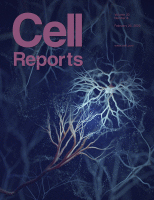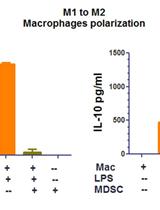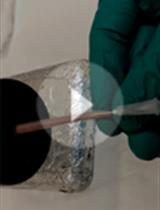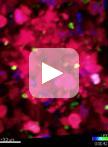- EN - English
- CN - 中文
A 3D Skin Melanoma Spheroid-Based Model to Assess Tumor-Immune Cell Interactions
基于球体的三维皮肤黑色素瘤模型评价肿瘤免疫细胞相互作用
发布: 2020年12月05日第10卷第23期 DOI: 10.21769/BioProtoc.3839 浏览次数: 4502
评审: Lokesh KalekarRon Saar DoverPorkodi PanneerselvamAnonymous reviewer(s)
Abstract
Three-dimensional (3D) tumor spheroids have the potential to bridge the gap between two-dimensional (2D) monolayer tumor cell cultures and solid tumors with which they share a significant degree of similarity. However, the progression of solid tumors is often influenced by the dynamic and reciprocal interactions between tumor and immune cells. Here we present a 3D tumor spheroid-based model that might shed new light on understanding the mechanisms of tumor and immune cell interactions. The model first utilizes the hanging drop assay, which serves as one of the simplest methods for generating 3D spheroids and requires no specialized equipment. Next, pre-established spheroids can be co-cultured either directly or indirectly with an immune cell population of interest. Using skin melanoma, we provide a detailed description of the model, which might hold a significant importance for the development of successful therapeutic strategies.
Keywords: Skin (皮肤)Background
Three-dimensional (3D) tumor spheroids are spherical self-assembled tumor cell aggregates, which resemble micrometastases and replicate many features of solid tumors. As in the non-proliferating regions of avascular solid tumors, tumor cells within the inner regions of spheroids usually demonstrate perturbed gene and protein expression, altered metabolism, cell cycle arrest and necrotic death (Sant and Johnston, 2017). However, most currently available techniques for generating 3D spheroids are time-consuming, difficult and expensive. A simple, fast and easy method for generating 3D spheroids is through the use of the hanging drop assay (Foty, 2011; Berens et al., 2015). Within the hanging drop, cells have no direct contact with substratum and due to gravity accumulate at the free liquid-air interface to form a single spheroid. In light of the increasingly recognized role of interactions between tumor and immune cells, pre-established spheroids can be co-cultured either directly or indirectly with different populations of immune cells, as shown in Figure 1.
Direct co-culture can be performed by culturing pre-established spheroids with immune cells in close proximity in the same culture environment, for example by layering two components one on top of the other. In contrast, indirect co-culture employs cell culture inserts with porous membranes, to keep immune cells separated from spheroids. Co-culturing pre-established spheroids with immune cells directly can provide information on cell-cell interactions based on physical contact, whereas indirect co-culture can be used to study the effects of secreted signaling molecules.
In our recent work, we generated spheroids from B16 melanoma cells and demonstrated their potential to impair proliferation of recently identified innate immune cells, group 2 innate lymphoid cells (ILC2s), through the production of lactic acid (Moro et al., 2010 and 2015; Wagner and Koyasu, 2019; Wagner et al., 2020). Here we provide a detailed workflow necessary for the generation of 3D spheroids from B16 melanoma cells that can be co-cultured with an immune cell population of interest. Using a hanging drop assay, B16 spheroids were generated over a period of 7 days, as shown in Figure 2. The optimal number of uniformly shaped spherical tumor cell aggregates with a smooth surface was obtained using cultures initiated with 10,000 cells per 25 μl. At least 24 spheroids can be produced per dish. Pre-established spheroids can be co-cultured with an immune cell population of interest to assess an impact of tumor cells on immune cell effector functions and vice versa. In order to address specific research questions, alterations to this condition including cell transfection, transduction and cell culture media modification with different therapeutic agents can be easily performed.
The possibility to reproduce the complex interactions between tumor and immune cells represents an important area of unfulfilled need towards the design of efficient therapeutic strategies. This protocol describes a simple, fast, and easy method for generating 3D spheroids that can be used to study the mechanisms of tumor and immune cell interactions.
Figure 1. Scheme displaying the principle of the hanging drop assay. Tumor cells per drop of cell culture medium are placed on the lid of a PBS containing dish and incubated for 7 days. Pre-established spheroids are collected and co-cultured directly or indirectly with an immune cell population of interest.
Materials and Reagents
75 cm2 cell culture flasks (Thermo Fisher, catalog number: 156499 )
10 cm dishes (Thermo Fisher, catalog number: 150464 )
15 ml conical tubes (Corning, catalog number: 352196 )
FalconTM permeable support for 24-well plate with 0.4 µm transparent PET membrane (Corning, catalog number: 353095 )
FalconTM 24-well TC-treated cell polystyrene permeable support companion plate (Corning, catalog number: 353504 )
Mus musculus B16F10 skin melanoma cells (ATCC, catalog number: CRL-6475 )
PBS, pH 7.4 (Gibco, catalog number: 10010023 )
0.25% Trypsin-EDTA, phenol red (Gibco, catalog number: 25200072 )
Trypan Blue solution (0.4%) (Thermo Fisher, catalog number: 15250061 )
RPMI-1640 medium with L-glutamine and sodium bicarbonate, liquid, sterile-filtered (Sigma-Aldrich, catalog number: R8758 )
Heat inactivated Fetal Bovine Serum (Japan Bioserum, catalog number: S1820-500 ) (Testing of different batches is recommended)
MEM Non-essential Amino Acid solution (100×) (Sigma-Aldrich, catalog number: M7145 )
Sodium Pyruvate (100 mM) (Gibco, catalog number: 11360070 )
HEPES solution (1 M) (Sigma-Aldrich, catalog number: H3537 )
Penicillin-Streptomycin (10,000 U/ml) (Gibco, catalog number: 15140122 )
2-Mercaptoethanol (Gibco, catalog number: 21985023 )
L-Glutamine (200 mM) (Lonza, catalog number: 17-605E )
Complete cell culture medium (see Recipes)
Equipment
Pipettes
Hemocytometer
Incubator (37 °C, 5% CO2)
Water bath (37 °C)
Refrigerated benchtop centrifuge for spinning conical tubes
Inverted microscope
Procedure
文章信息
版权信息
© 2020 The Authors; exclusive licensee Bio-protocol LLC.
如何引用
Wagner, M. and Koyasu, S. (2020). A 3D Skin Melanoma Spheroid-Based Model to Assess Tumor-Immune Cell Interactions. Bio-protocol 10(23): e3839. DOI: 10.21769/BioProtoc.3839.
分类
癌症生物学 > 肿瘤免疫学 > 肿瘤微环境 > 免疫抑制
您对这篇实验方法有问题吗?
在此处发布您的问题,我们将邀请本文作者来回答。同时,我们会将您的问题发布到Bio-protocol Exchange,以便寻求社区成员的帮助。
Share
Bluesky
X
Copy link














